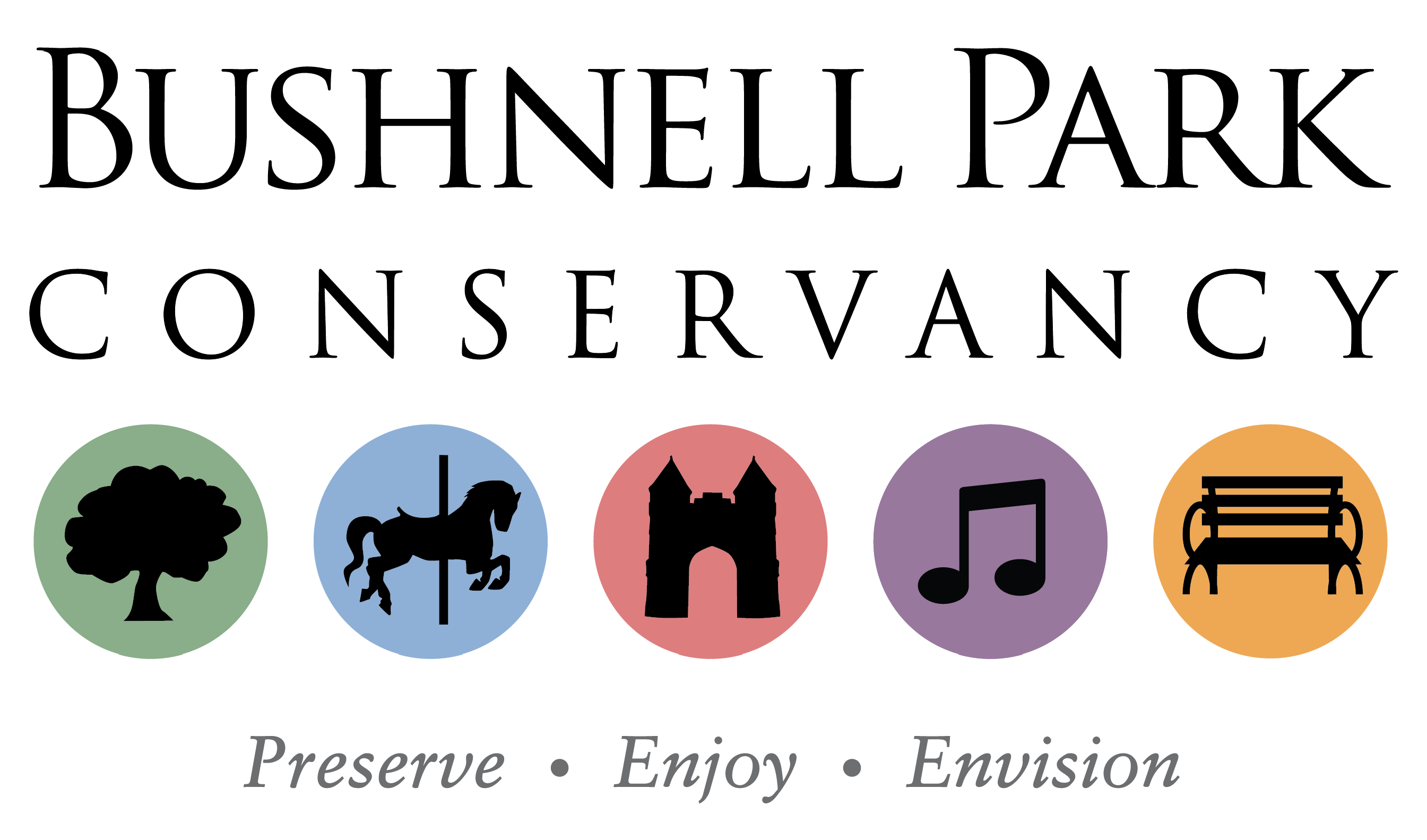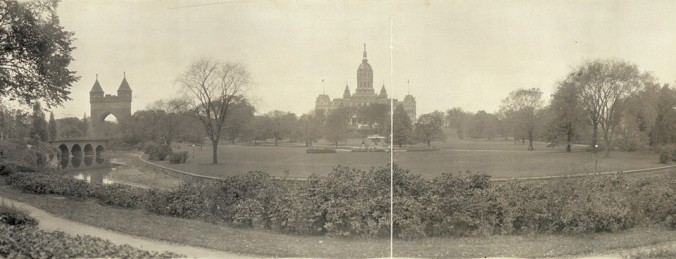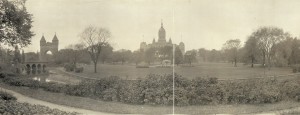Contrary to popular belief, Bushnell Park was not designed by Hartford native Frederick Law Olmsted, but his protégé, Jacob Weidenmann, a Swiss-born landscape architect and botanist.
Hartford in the 1850s was a rapidly growing river town, doubling in population from 1850 to 1860. The city’s economy was booming, driven by industries such as publishing, insurance, banking, munitions, manufacturing and river shipping. Like many American cities of the time, Hartford was enjoyingthe benefits of the Industrial Revolution. But along with this growth came some growing pains, including crime, crowded tenements, poverty, poor sanitation, polluted water and air. These problems were a growing concern of civic leaders at mid-century.
Andrew Jackson Downing (1815-1852) was the primary influence in the creation of a national park system in the United States. By 1848, he was advocating the creation of urban parks financed by private funds for the enjoyment of select groups of people. But he never advocated publicly financed parks. In 1851, a proposal was made to establish a centrally located park in New York City. And land for New York’s Central Park was privately purchased in 1853. Later that year, recognizing the need for open space in Hartford, CT, the Reverend Horace Bushnell presented an idea that had not been suggested in any other American city–the creation of a public park, financed by public funds.
Initial public reaction was skeptical. Hard-nosed business leaders were opposed to removing taxable property from the tax rolls. Furthermore, it was hard to imagine a less likely place for a green, peaceful park than Bushnell’s proposed site, which was home to two leather tanneries, a soapworks, pigsties and other livestock–even a garbage dump. A railroad spur ran through it and the Park River, polluted with the city’s industrial waste, ran alongside it. Crowded tenements lined both banks of the river.
However, after hearing Dr. Bushnell’s presentation in October 1853, the Hartford City Council voted unanimously in November to spend public funds–$105,000-to buy the land that was to become Bushnell Park. Hartford voters approved the expenditure on Jan. 5, 1854, by a vote of 1,687 to 683, making it the first municipal park in the nation to be conceived, built and paid for by citizens through a popular vote.
But six years later, the park still had not taken shape. It was clear that a new and comprehensive park plan was needed. Bushnell asked his life-long friend, Frederick Law Olmsted, a Hartford native and world-famous designer of New York’s Central Park, to design the park. However, Olmsted could not grant Bushnell’s request since he was busily designing Central Park at the time. He recommended that the city hire Jacob Weidenmann, a Swiss-born landscape architect and botanist to design and build the park.
Weidenmann’s plan of 1861 had a distinctive natural style, which featured smoothly sculpted contours and graceful paths leading to focal points like the meandering Park River. The plan included informal clusters of evergreen and deciduous trees, which screened the sites and sounds of the city, a departure from the formal New England square or central green.
As part of the plan, Weidenmann selected 157 varieties of Trees and shrubs from North America, Europe and eastern Asia to grace the park. A total of 1,100 individual specimens were planted, creating a canopy of green covering the Park. Over the years, many important architectural features, such as the Soldiers & Sailors Memorial Arch (1886), the Capitol (1876), Corning Fountain (1899), the Carousel (1974) and the Performance Pavilion (1995) were added, while other scenic elements, such as the Park River and its several graceful bridges, were demolished in the 1940s. A major transformation in the park occurred at this time when the firm of Olmsted and Olmsted of Brookline, Mass., (Frederick Law Olmsted’s son’s firm), was retained to assist the city in redesigning the Park after the burial of the Park River was completed. Although changed, Bushnell Park today remains an oasis in the heart of the city where people from all walks of life come to renew their spirit and energy.


